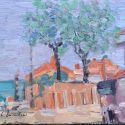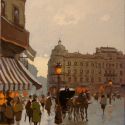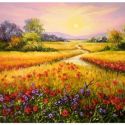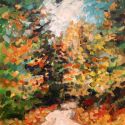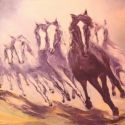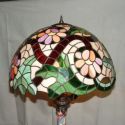Definitely, this is the best known and most important theatre of Romanian, an impressive structure, right in the center of Bucharest, which has hosted a tremendous number of great performances, given by the best artists, being a symbol of national art. Since it's beginnings, the National Theatre promoted mainly Romanian plays and artists - without avoiding the best of international plays - and it was here that the first directors were formed, here countless generations of great actors won the heart of the audience, here drama and comedy shows were legendary. The I L Caragiale National Theatre in Bucharest is already almost 150 years old, and it seems to be here forever.
It's history begins in 1852, when the theatre was opened, a direct result of the changes - cultural, political and social - that forever marked the Romanian society after 1848. It was the time to change everything, the time to build a national identity, and the best way was to have, promote and encourage a large number of Romanian cultural products, from literature and painting to music and especially theatre. In a time when most of the shows were put on by foreign groups of artists, when almost all of the plays were foreign - often played in French, German and other languages - most of the so-called theaters were far, very far from today's image. So Bucharest, a great city, needed a great theatre, and this National Theatre, an ambitious project, will be promoting Romanian plays, Romanian artists and directors, Romanian authors and last but not least will educate the audience.
At first, the theatre was really small, and the main project was to extend it, for it to host more plays at the same hour. In 1864 Mihail Kogalniceanu decided that the Nationa Theatre would be financially supported by the state and would have the status of national institution. The first law regarding "organising and administering theaters in Romania" waas voted in the Parliament in 1877, but the funds for the theaters were lacking, as most of the money went to support war efforts, in the Independence War. The National Theatre tried to bring it's part in helping the troops, as a large part of it's profits were given for hospitals and the tending of wounded soldiers.
It was in 1908 that Pompiliu Eliade promoted a new low regarding the National Theatre, which placed the accent upon encouraging and promoting Romanian playwriters and also emphasised the nedd for cooperation between the theatre, the University and the Academy. So, the National Theatre was already considered a major part of modern Romanian culture, and already some of the performances here were very much appreciated by the audience, critics and even foreign journals. At the National Theatre most of the authors, artists and directors of importance had their debut or at least several performances, that would remain in the history of Romanian playwrighting.
The first major premiere was in 1867, when the stage of the National Theatre hosted a major creation of Romanian dramaturgy : "Razvan si Vidra", by B.P. Hasdeu. It will be soon followed by several plays of I.L. Caragiale, one of the classics of Romanian literature, some plays of Vasile Alecsandri and others. At the beginning of the 20th century, other important plays will be presented here, much to the delight of the audience : "Vlaicu Voda" by Alexandru Dabila in 1902, works of Barbu Stefanescu Delavrancea in 1909 - 1910. In the interwar period, considered by the many the golden age of Romanian dramaturgy, the number and variety of plays put on stage here are astounding. The names of the authors are by all means just as impressive, as many are still considered important names in the cultural history of the country. A few examples : Victor Ion Popa, Camil Petrescu, Victor Eftimiu, Liviu Rebreanu, N.Iorga, Gib Mihaescu, M.Sebastian, George Ciprian, Mihail Sorbul, Anton Holban, A.Kiritescu, G.M. Zamfirescu, Tudor MuSatescu Eugen Ionescu, Mircea Eliade. Later this great names would be continued in the Communist regime, despite the political hardships and censorship, by successful plays of other authors : Horia Lovinescu, Eugen Barbu, I.D.Srbu, Teodor Mazilu, Paul Anghel, D.R.Popescu and many others. Many of these names became well-known world wide, and some of their works were so succesful that are still being played, even today.
The old building of the I.L. Caragiale National Theatre was bombed at the end of Second World War, being severely damaged, so it was time for a new buildings. Which was ready in 1973, at the present location, an impressive structure, with several halls, just right for the talent and ambition of actors and directors. Many of the plays here are always tremendous succeses, and it is not rare to have troubles buying a ticket for a certain play. Of course, over all this time not only national dramaturgy was present here, but also the best of the best from international playwrighting, focusing on the great classics.
Over the course of it's long history, the National Theatre was managed by important names : Costache Caragiale, Matei Millo, C.A. Rosetti, Costache Dimitriade, Mihail Pascaly, Alexandru Odobescu, Ion Ghica, Constantin Cornescu, Grigore C. Cantacuzino, Constantin I.Stancescu, I.L.Caragiale, Petre Gradisteanu, Scarlat Ghica, Stefan Sihleanu, Alexandru Davila, Pompiliu Eliade, Ion Bacalbasa, George Diamandi, Alexandru Mavrodi, Constantin Radulescu-Motru, Ion Peretz, Victor Eftimiu, Ion Valjan, Corneliu Moldoveanu, Ion Minulescu, Alexandru Hodos, Liviu Rebreanu, Ion Gr.Perieteanu, Paul Prodan, Ion Marin Sadoveanu, Camil Petrescu, Haig Acterian, Nicolae Carandino, Tudor Vianu, Ion Pas, Ioan Popa, Vasile Moldoveanu, Zaharia Stancu, Radu Beligan, Andrei Serban, Fanus Neagu, Ion Cojar, Dinu Sararu.
It is hard, even impossible, to imagine the cultural history of modern Romania withous the impressive presence of the National Theatre in Bucharest. Over the decades, it has been a cultural forum, a place of important encounters between creators, the spot where a briliant performance on stage could bring you the love and passion of the whole country. Even during the Communist years, when due to political constraints some sacrifices had to be made - directors, authors, actors who weren't allowed to work, several plays strictly foirbidden - the I.L. Caragiale National Theatre kept on going, made the best of what it was, managed to draw thousands and thousands to the plays. It was and still is a place where you can learn, where you can enjoy the art of great actors, where you can see a good play 10-15 times and everytime there will be something about it that touches you.
Photo : romanianvoice.com
2007-12-12



